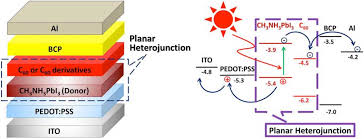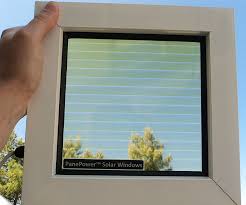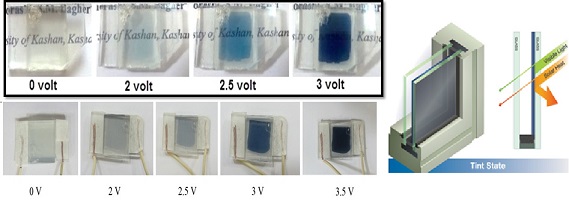| نویسندگان | ارزو محمدبیگی دهقی,سمانه مظفری,سیدمحمدباقر قریشی |
|---|
| نشریه | Journal of Sol-Gel Science and Technology |
|---|
| شماره صفحات | 1 |
|---|
| شماره مجلد | 93 |
|---|
| ضریب تاثیر (IF) | ثبت نشده |
|---|
| نوع مقاله | Full Paper |
|---|
| تاریخ انتشار | 2020-01-24 |
|---|
| رتبه نشریه | علمی - پژوهشی |
|---|
| نوع نشریه | الکترونیکی |
|---|
| کشور محل چاپ | ایران |
|---|
| نمایه نشریه | JCR |
|---|
چکیده مقاله
SnO2 nanoparticles were synthesized and modified by TiO2 shell through sol–gel method. Band gap energy and
photoluminescence properties of SnO2 nanoparticles and yolk-shell SnO2@TiO2 nanospheres were investigated by UV–Vis
absorption spectra and photoluminescence (PL) spectroscopy. The nanoparticles were used as electron transport layers
(ETLs) for fabrication of perovskite solar cells (PSCs) and PSC based on yolk-shell SnO2@TiO2 ETL showed higher photon
conversion efficiency (PCE =11.28%) and lower hysteresis index (37%) compared with the PSC made of SnO2 ETL (PCE=
8.55% and hysteresis index = 52%). The increase in the short-circuit current density (Jsc), open circuit voltage (Voc), and
subsequently PCE for the PSC based on yolk-shell SnO2@TiO2 ETL is attributed to the smoothness and uniformity of
perovskite film, improvement of surface defects at the ETL/perovskite interface, and suitable energy band alignment for
effective injection of electron from perovskite to the conduction band of TiO2 as well as from TiO2 to the SnO2.
Electrochemical impedance spectroscopy (EIS) was employed to determine the charge transport resistance at the ETL/
perovskite interface and confirmed the results obtained by the characteristic curve of the current density–voltage. The
stability test of the devices displayed that long-term stability of PSC made of yolk-shell SnO2@TiO2 ETL is almost the same
as the SnO2 ETL-based PSC because of the high resistance of SnO2 against the moisture and oxygen in the environment




